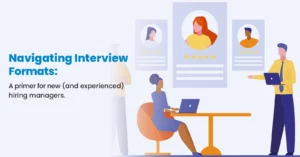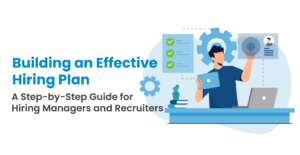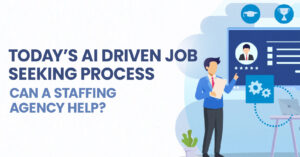Competitive organizations are redesigning their acquisition strategies to capture the attention of today’s younger generation of talent. However, investing in recruiting the new wave worker is of little to no value if a hiring program fails to retain that resource.
Organizations with structured or formalized onboarding programs can see a 60 per cent year-over-year improvement in revenue and a 63 per cent increase in overall customer satisfaction over under performing companies—yet effective programs require immediate engagement, and today’s talent expects that engagement to be a unique, effortless and relevant experience.
HCI states that most organizations end their onboarding process just after the first week, leaving new hires feeling confused, discouraged and lacking in resources. Companies that do get it right, however, understand effective onboarding is also an ongoing process.
Organizations will lose 20 per cent of new hires within the first 45 days of employment due to ineffective onboarding. And while the basic elements of any program include things like training, feedback, check-ins and support, best practices must exceed standard processes in today’s competitive and blended workforce. How you handle a new hire’s first few days and months of employment is crucial, as few new hires are fully invested in the role or organization, and candidates who experience poor onboarding are 8x more likely to become disengaged after 90 days.
Onboarding blind spot: 77 per cent of hiring managers believe their organization is always organized and prepared for a new hire’s first day, yet only 33 per cent of new hires agree.
Before the start date
Manage your employer brand
Negative employer branding makes it all the more difficult for organizations to keep top talent on board, Yet, less than half (45 per cent) of organizations are even monitoring online reviews.
Websites like Glassdoor allow current and previous employees to anonymously leave reviews. It’s important that organizations have a dedicated monitor who will review these sites and address any negative input. If you’ve successfully taken the steps to resolve issues, data about trends in your improved reviews will be visible.
Invest in automation
Automating onboarding paperwork and practices increases productivity for all departments and workers involved. Automated notifications update new hires when documents are due, unfinished or incomplete, enabling employers to focus on the experience rather than missing paperwork. Automation also enables new hires to hit the ground running, immersing them in their roles and work, expediting productivity and increasing efficiency.
Onboarding blind spot: Sapling reports that new hires will have over 50 activities that need to be completed during their onboarding period.
Regularly review and refine onboarding process
Each new hire is an opportunity to review your onboarding program and identify areas for improvement. Although different workers will have their own expectations regarding their onboarding experience, the data collected will help refine a more data-driven, informed approach to your organization’s processes.
Set the start date for as soon as possible
Don’t wait until it’s too late to get your new hire onboarded! Once a contract is signed, it’s common for organizations to disengage from talent until the start date begins –increasing the chances of losing that resource to another opportunity in the interim. Be aware of your hiring timelines and try to have your new worker start as soon as possible.
Onboardng blind spot: Nine per cent of candidates will disappear after they’ve accepted a job offer.
Begin emotional onboarding
Your method of engagement matters, and the best onboarding programs are structured and strategic as opposed to administrative. This means having a focus on people, not paperwork.
Many organizations mistake the magic moment between an offer being accepted and the new hire’s start date as the time to inundate with paperwork. Although these materials are important, an employer’s opportunity to make the emotional connection crucial to a candidate’s experience is lost among crossing the T’s and dotting the I’s. And it’s more important now than ever for organizations to personalize the experience to that worker.
When filling senior level positions, for example, and the candidate will need to relocate, you can offer an introduction to a local real estate agency or arrange a personal tour around the best parts of town. Is there parking onsite or transit available? Where is the best spot for coffee or lunch?
For more junior level roles, a simple phone call or email with a personalized introduction from a member of the management team or a team leader could make all the difference over a competing offer with a less personalized approach.
Onboarding blind spot: 58 per cent of organizations admit their onboarding program is focused on processes and paperwork.
First day
Concentrate on culture and connection
While paperwork is important, it’s an organization’s people who will make the difference in engagement.
Ensure your department is organized and prepared for the worker’s first day with things like IT and resources. Give a tour of the office and introduce the new hire to each member on the team and management. You’ll also want to give a background on the company, its values and business strategy and set day-to-day job expectations and goals.
Onboarding blind spot: 77 per cent of organizations believe new hire IT and office resources are always ready on the first day, yet only 23 per cent of new hires agree.
First month
Avoid subcultures among traditional and gig workers
Although contingent workers cannot be classified as full-time employees or enjoy the same company incentives or perks, it is important to offer a sense of inclusion to avoid workplace barriers created by any full-time employee and contingent worker subcultures. As an employer, businesses can’t be careless or apathetic when dealing with a contingent workforce. To remain motivated, productive and inclined to stay or return for future projects, contingent workers need to feel as though they are part of the team and not just temporary bodies in a seat.
Consider a mentoring or an ambassador/buddy program
According to HCI, 87 per cent of organizations that assign an ambassador or buddy program during the onboarding process say that it’s an effective way to speed up new hire proficiency. Mentoring or ambassador/buddy programs can be as simple as assigning a ‘go-to’ person to a new hire, or they consist of a more elaborate program of a team of Subject Matter Experts.
Set up one-on-one time, check in and give feedback
LinkedIn reports 96 per cent of workers state one-on-one time with their direct manager is crucial to having a good onboarding experience. These meetings will help make the seamless transition from new hire to team member and feedback will help manage expectations.
Onboarding blind spot: 76 per cent of managers believe they meet with new hires at the necessary frequency, yet only 25 per cent of new hires agree.
Map a future
To keep traditional employees and gig workers motivated, organizations must work with them to define and plan expectations and milestones that will serve as guidelines and benchmarks for success. Doing so will also allow managers to identify strengths or any areas of weakness, while integrating the new hire into the culture and their role.
Three to six months
Set up one-on-one time, check in and give feedback—again
Nearly 90 per cent of workers decide whether to stay or go within their first six months of employment; however, only 15 per cent of organizations continue the onboarding process past six months.
Review first day goals
Whether a new hire is a temporary resource or a traditional employee, performance reviews are critical to managing overall expectations—and costs associated with a bad hire. Were goals achieved and expectations met? Were expectations clear and was training and the necessary resources available for the new hire’s success?
Onboarding blind spot: 77 per cent of managers believe clear job expectations are always conveyed in the process, yet only 30 per cent of new hires agree.
End of first year
When onboarding traditional employees or gig workers with long-term contacts, it’s critical for organizations to accept the onus of committing to a 365 onboarding program that provides training, support a resources for success for the first full year of employment.
Harvard Business Review reports it takes employees eight months to reach peak productivity, yet onboarding programs that exceed the first week last, on average, only three months. The most successful programs, however, last up to one full year with frequent check-ins and feedback given throughout.
Companies who commit to a 365 onboarding experience accelerate new hire proficiency by 34 per cent.
The role of a talent management firm
Managing contingent labour or a blended workforce comes with more costs and risks than a traditional worker program. Often, organizations will adopt a unified approach by outsourcing the management either in its entirety or in part to a third party. A great staffing partner will support an organization’s total talent needs, streamlining its workforce program to elevate quality and drive efficiency across the entire talent lifecycle, increasing efficiency and mitigating risks.
As a trusted partner, Procom is committed to advising our clients on the best solutions available to meet their business goals and deliver innovative services that transform how they acquire and manage talent.
The Voice of Talent: Return to the Office Report
Procom recently surveyed over 1,000 knowledge workers to discover how and where they prefer to work as offices re-open across North America.
The Voice of Talent Report offers actionable insights into what workers expect in relation to mandatory vaccinations, remote work preferences, The Great Resignation, COVID-19 safety measures and more.
Access your complimentary copy to discover how to attract talent in a post pandemic world: {{cta(‘876b6743-23dc-425b-b245-80dba677a9c7′,’justifycenter’)}}




